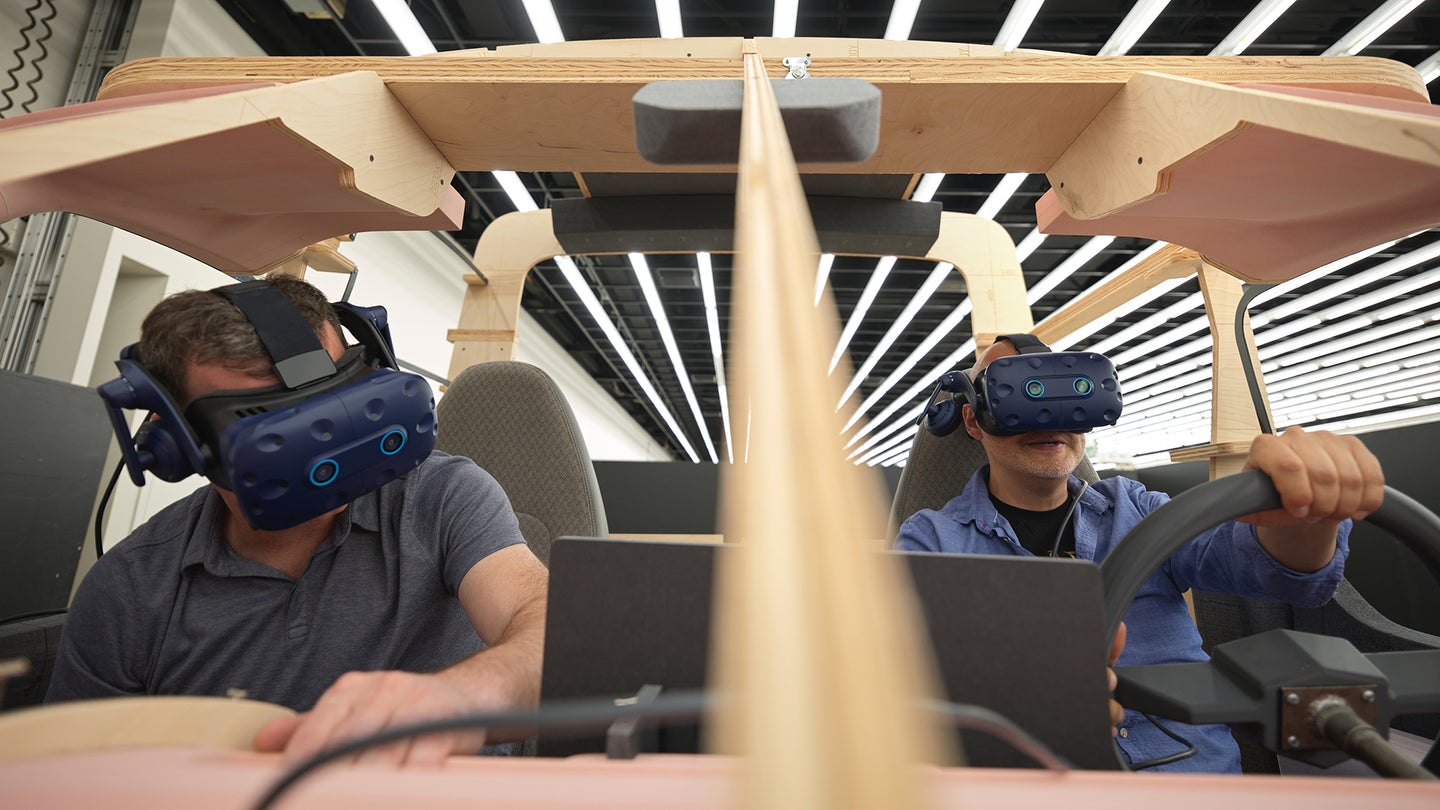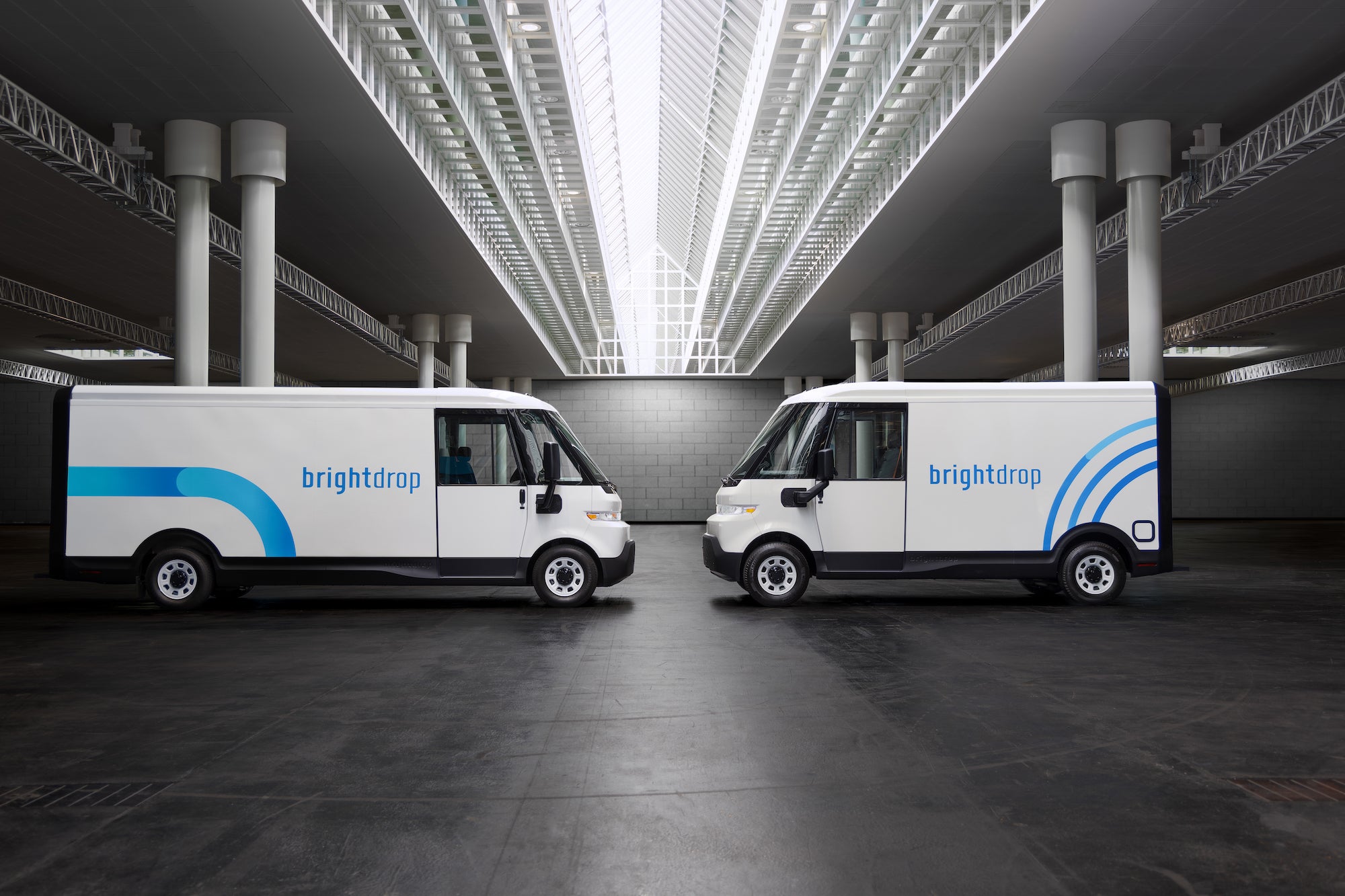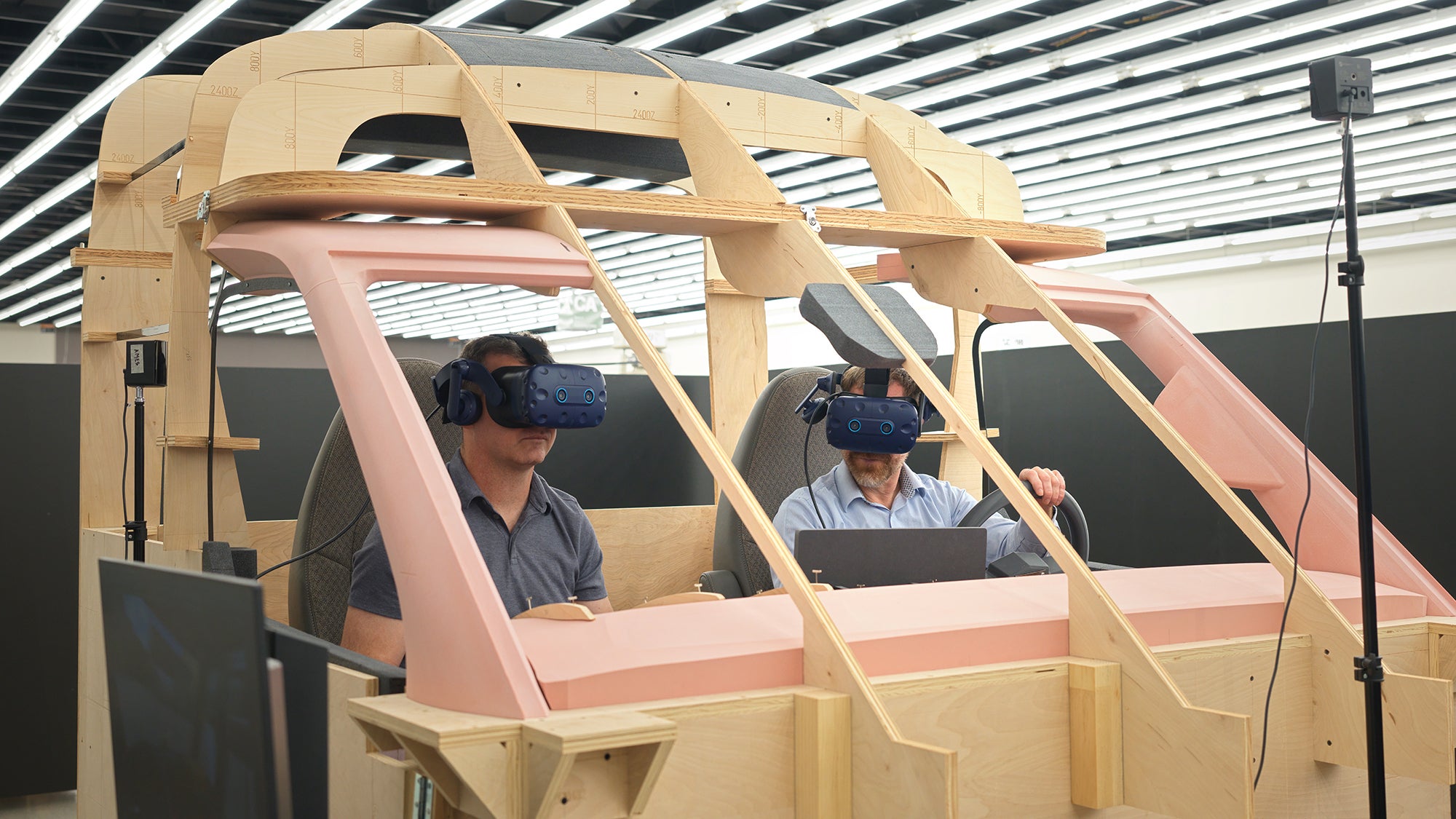
Historically, the process of designing vehicles could take years. Starting with initial sketches and ending with the final product, the timeline has included making life-size clay exterior models, doing interior modeling, conducting tests, and more.
During the lockdowns of the global pandemic beginning in 2020, General Motors teams found themselves in a new quandary: moving forward on projects while working remotely, and without physical representation of the vehicles in progress to touch and see. GM had dipped a big toe into using virtual reality to accelerate the development process for the GMC Hummer EV pickup, which launched in October 2020. That gave the team a head start on the Zevo 600, an all-electric delivery van.
Developed by BrightDrop, GM’s breakout business dedicated to electrifying and improving the delivery process, the Zevo 600 went from sketch to launch in January 2021 in a lightning-quick 20 months. A large part of that impressive timeline is due to the immersive technology tools that the team used. The modular Ultium battery platform and virtual development process used for the Hummer EV greased the wheels.
Here are the details on the virtual tools that helped build the electric delivery van.

What does it mean to design a vehicle this way?
BrightDrop says it considers itself a software company first and a vehicle company second, and there’s no question it’s pushing the envelope for GM. Bryan Styles, the head of GM’s immersive technology unit, sees the impetus behind this focus as coming from the industry’s increasing speed to market.
“The market continues to move very quickly, and we’re trying to increase the speed while still maintaining a high level of quality and safety at this pace,” Styles tells PopSci. “Immersive technology applies to design space up front, but also to engineering, manufacturing, and even the marketing space to advertise and interface with our customers.”
Working remotely through technology and virtual reality beats holding multiple in-person meetings and waiting for decisions, which can be very challenging as it relates to time constraints.
“GM’s Advanced Design team brought an enormous amount of insight and technical knowledge to the project, including our insights-driven approach and how we leveraged GM’s immersive tech capabilities,” says Stuart Norris, GM Design Vice President, GM China and GM International, via email. “This enabled us to continue to collaboratively design the vehicle during the COVID-19 pandemic from our offices, dining rooms and bedrooms.”
The project that led to BrightDrop started with a study of urban mobility; the GM team found “a lot of pain points and pinch points,” says GM’s Wade Bryant. While the typical definition of mobility is related to moving people, Bryant and his team found that moving goods and products was an even bigger concern.
“Last-mile delivery,” as it’s often called, is the final stage of the delivery process, when the product moves from a transportation hub to the customer’s door. The potential for improving last-mile delivery is huge; Americans have become accustomed to ordering whatever strikes their fancy and expecting delivery the next day, and that trend doesn’t appear to be slowing down any time soon. In jam-packed cities, delivery is especially important.
“We traveled to cities like Shanghai, London, and Mumbai for research, and it became very apparent that deliveries were a big concern,” Bryant tells PopSci. “We thought there was probably a better design for delivery.”
Leave room for the sports drinks
Leveraging known elements helped GM build and launch the Zevo 600 quickly. As Motortrend reported, the steering wheel is shared with GM trucks like the Chevrolet Silverado, the shifter is from the GMC Hummer EV Pickup, the instrument cluster was lifted from Chevrolet Bolt, and the infotainment system is the same in the GMC Yukon.
Designing a delivery van isn’t like building a passenger car, though. Bryant says they talked to delivery drivers, completed deliveries with the drivers, and learned how they work. One thing they discovered is that the Zevo 600 needed larger cup holders to accommodate the sports drink bottles that drivers seemed to favor. Understanding the habits and needs of the drivers as they get in and out of the truck 100 or 200 times a day helped GM through the virtual process.
The team even built a simple wooden model to represent real-life scale. While immersed in virtual technology, the creators could step in and out of the wooden creation to get a real feel for vehicle entry and exit comfort, steering wheel placement, and other physical aspects. Since most of the team was working remotely for a few months early in the pandemic, they began using the VR tech early on and from home. As staff started trickling into the office in small groups, they used the technology both at home and in the office to collaborate during the design development process even though not everyone could be in the office together at once.
The Zevo 400 and 600 (each referring to the van’s cargo capacity in cubic feet) is the first delivery vehicle that BrightDrop developed and started delivering. So far, 500 Zevo 600s are in operation with FedEx across California and Canada. The first half of this year, the company has built more than 1,000 Zevo 600s and are delivering those to more customers, and production of the Zevo 400 is expected to begin later this year.

Maserati did something similar
GM isn’t alone in its pursuit of fast, streamlined design; Maserati designed its all-new track-focused MCXtrema sports car on a computer in a mere eight weeks as part of the go-to-market process. As automakers get more comfortable building with these more modern tools, we’re likely to see models rolled out just as quickly in the near future.
It may seem that recent college graduates with degrees in immersive technology would be the best hope for the future of virtual design and engineering. Styles sees a generational bridge, not a divide.
“As folks are graduating from school, they’re more and more fluent in technology,” Styles says. “They’re already well versed in software. It’s interesting to see how that energy infuses the workforce, and amazing how the generations change the construct.”
Where is vehicle design going next? Styles says it’s a matter not necessarily of if automakers are going to use artificial intelligence, but how they’re going to use it.
“Technology is something that we have to use in an intelligent way, and we’re having a lot of those discussions of how technology becomes a tool in the hand of the creator versus replacing the creator themselves.”
The post From clay cars to VR: How GM is designing an electric fleet at top speed appeared first on Popular Science.
Articles may contain affiliate links which enable us to share in the revenue of any purchases made.
from | Popular Science https://ift.tt/OmcnUSR




0 Comments